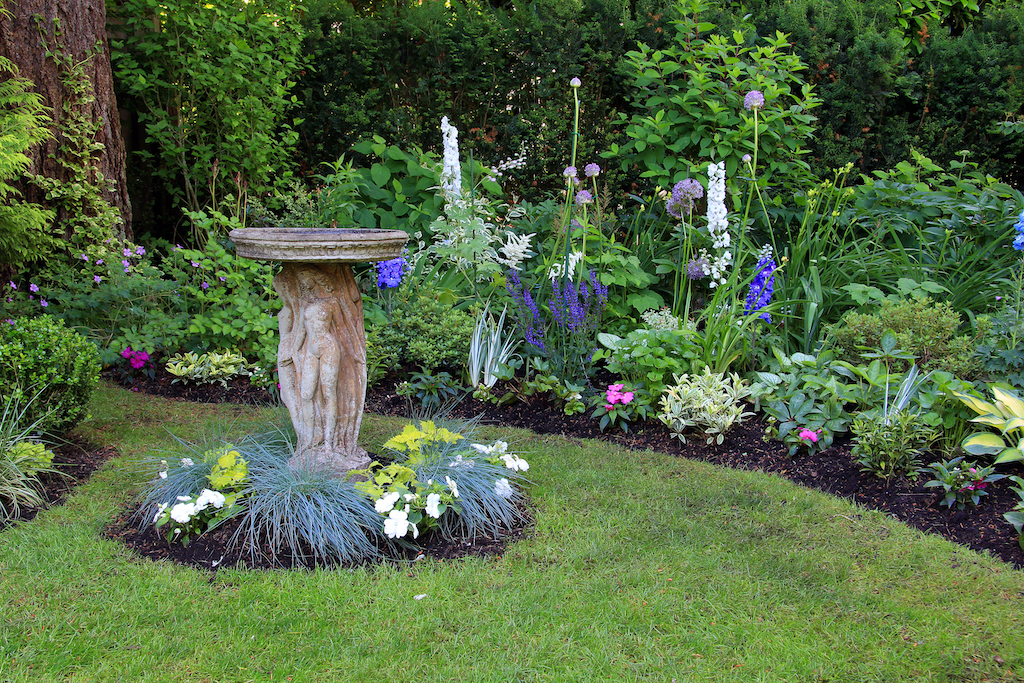Who doesn’t love birds? Bird gardening is an excellent way of taking your love for birds to the next level. But what exactly is bird gardening? Keep reading for more tips about bird gardening.
*This post contains compensated links. Find more info in my DISCLAIMER. As an Amazon Associate, I earn from qualifying purchases.
What Is Bird Gardening?
The desire to attract birds to our backyards is one of the top reasons for starting a bird garden. The bird can frequently forage through your backyard. However, if you build bird-friendly garden birds, you will start noticing an actual difference in the numerous species that visit.
Gardening for birds is a sure way of creating more interest in your backyard or deck. You will also provide valuable resources for the birds. Bird gardening involves building bird-friendly gardens specifically designed to meet the needs of birds.
Bird gardening involves growing certain plants and building structures that provide shelter, food, and water. Common accessories for garden birds include nesting boxes, manmade feeders, birdbaths, and birdhouses. Alternatively, you can incorporate plant-based backyard gardening ideas that use natural materials to meet the needs of birds.
Creating an inviting and safe habitat is the key to successfully attracting birds to your backyard. A bird garden is an excellent way of using your backyard, whether small or large, to help wildlife.

Why Use A Bird Garden?
Bird gardening has become increasingly popular in the recent past. Many people build a bird garden as a hobby because of their love for birds. However, gardening for birds has numerous benefits.
One key benefit of a bird garden is that it helps birds survive through strong winters. Birds need a lot of calories to stay competitive and fit, especially during freezing seasons. If there is a lot of snow, these creatures may fail to find enough food to survive.
Bird gardening can help sustain the population of birds by enhancing their breeding behavior. If birds get an ideal habitat, they will likely focus on production rather than finding shelter and food. Gardening for birds also helps in maintaining ecological balance.
However, bird gardening has its cons too. Birds can transmit diseases to humans. You should take great care, especially when you see a dead bird in your yard. In addition, Birds can also be at risk if you have pets such as cats. The cat will attack the birds sooner or later.
Garden birds can become over-reliant on humans for shelter, food, and water, altering their behavior. It will be more convenient for the birds, and they may lack the skill for competing for food in nature.
Ways To Use Bird Gardening
Most people use bird gardening as a means of caring for birds. Bird gardens provide the resources that birds need. Many bird lovers install feeders, and birdbaths and provide shelter so that they can have their favorite birds around.
Bird gardening is an excellent way of landscaping by introducing a variety of plants and accessories to your backyard. Diverse plants such as trees, shrubs, flowers, and layered vegetation are perfect for landscaping.
A variety of flowers will attract birds and enhance your backyard’s aesthetics. The different plants and flowers in a bird garden will decorate your backyard. You can also add a beautiful water feature that will be attractive and serve as a birdbath.
You can use different types, shapes, and sizes of bad baths, feeders, nests, and shelters. These accessories attract birds and reduce the open spaces in your backyard. Open places may make your landscaping dull and fail to attract birds. They have fewer food sources, provide no shelter, and birds will be more vulnerable to attacks from predators.
If you plan on using a landscaper, they should be aware that you wish to attract birds. Work closely with them to design a garden bird that meets your landscaping needs.
Best Plants For Bird Gardening
Bird garden plants vary depending on the type of birds you wish to attract. Native wildflowers such as zinnias, sunflowers, and echinacea are among the best plants.
But most birds will be thrilled to find perennial and annual flowers that produce a lot of seeds. Plants with nuts or berries may provide additional nutritional value for foraging birds. Thorny bushes and large shrubs offer protection against predators.
Most birds are familiar with native plants, making them the best plants to attract birds. These plants consist of regional and local trees, flowers, grasses, and shrubs. In addition, native plants provide natural shelter and are rich food sources. They are also adapted to the local climate and will thus need low maintenance and less fertilizer.
Layered vegetation is essential for bird gardening because the different layers of plants are ideal for various birds to use. This vegetation type allows other bird species to live in the same region. The birds adapt to the different vegetation available in the bird garden.
Dense plants may make birds feel safer and more secure in your backyard. Creating lush vegetation will shield birds from cats, hawks, and other predators. This kind of vegetation is ideal for nesting and roosting.
Plant diversity attracts different varieties of birds. The wider the plant variety, the more the species of bird your garden will attract. When choosing the plants, it is best to consider the season that the plants will be most beneficial.
While incorporating plants into your bird garden, it will be ideal to use organic and natural fertilizers that will not harm the birds. You can also minimize pesticide use and let the insects and pests be a source of food for the birds.
Best Locations For A Bird Garden
The location of your bird garden can be the key to success in bird gardening. Before planning your garden bird, it would be nice to visit several wildlife sanctuaries, parks, and natural bird habitats. This will provide you with backyard gardening ideas that you can apply when designing your bird garden.
However, you should never perfectly manicure and neatly trim your bird garden. A bird-friendly landscape should mimic the natural habitat. Longer glass, leaf litter, and bush piles attract birds because they resemble the natural habitat. The long glass and some piles of leaves will provide the best shelters and nesting materials for the birds.
One effective way to attract birds to your location is to let shrubs and flowers grow to the seeding phase without trimming them. The seeds are excellent food sources for the birds, and bird lovers will also enjoy watching the birds as they feed in their natural habitat.
Birds love to sit on trees and shrubs. Therefore, your bird garden location should have a few of them. As the birds move around the shrubs, they will be assisting with the pollination of dioecious shrubs.
The perfect location for bird gardening should have food, water, shelter, and mimic the natural habitat. While you can quickly provide water and food, mimicking the natural habitat involves introducing various plants, shrubs, and trees into your backyard.
FAQs – Bird Gardening
A bird garden doesn’t have to be over complicated. Installing a birdbath or a mix of trees and shrubs is the easiest way to get started.
From controlling pests to providing beautiful songs, birds are super helpful. Some of the best birds to attract for a bird garden include bluebirds, wrens, and swallows.
